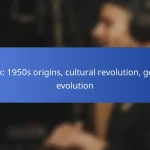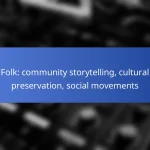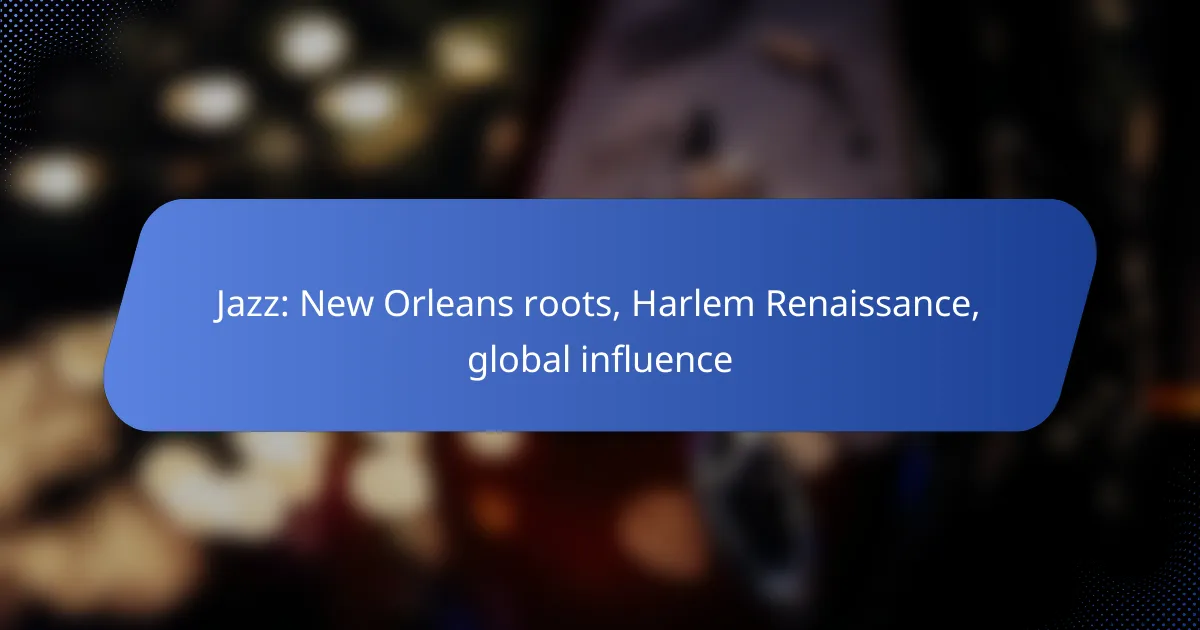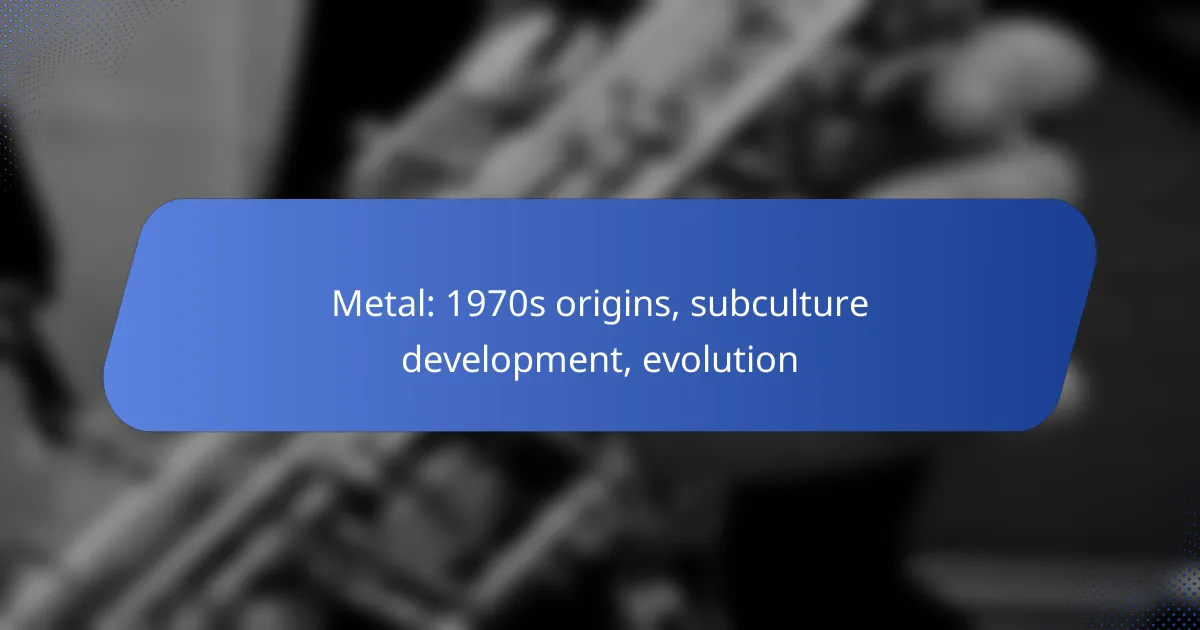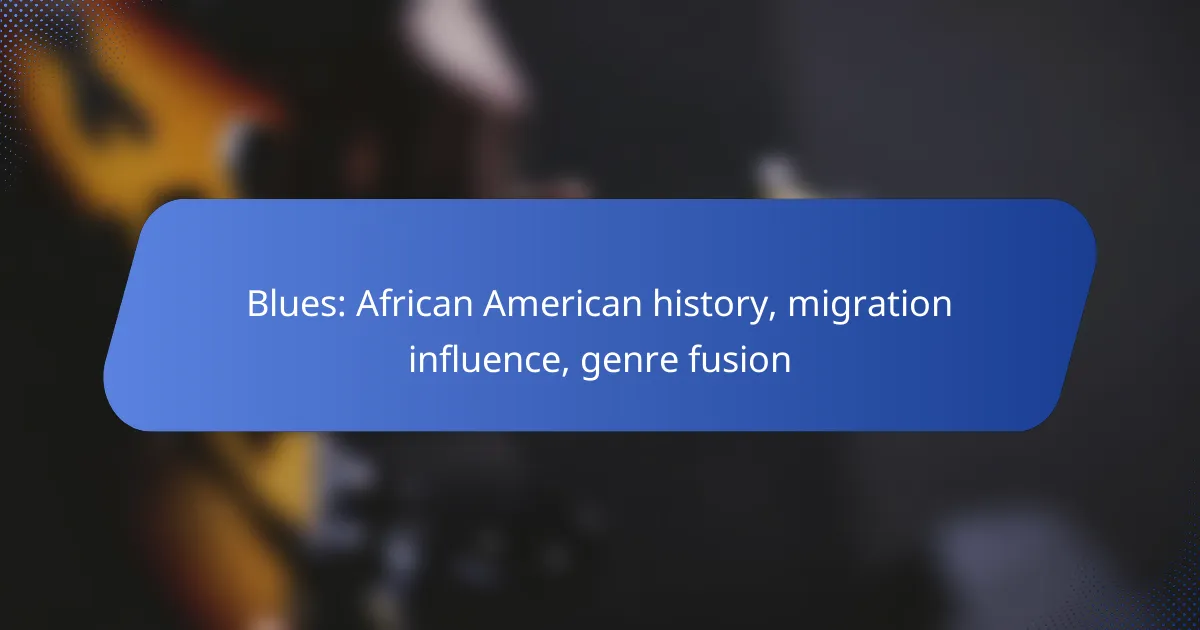Hip Hop emerged in the 1970s Bronx as a dynamic cultural movement that intertwined music, dance, and visual arts, reflecting the social and economic struggles of marginalized youth. This vibrant expression of identity and community laid the groundwork for a genre that would eventually gain mainstream acceptance, propelled by influential artists and media exposure in the late 1970s and early 1980s.
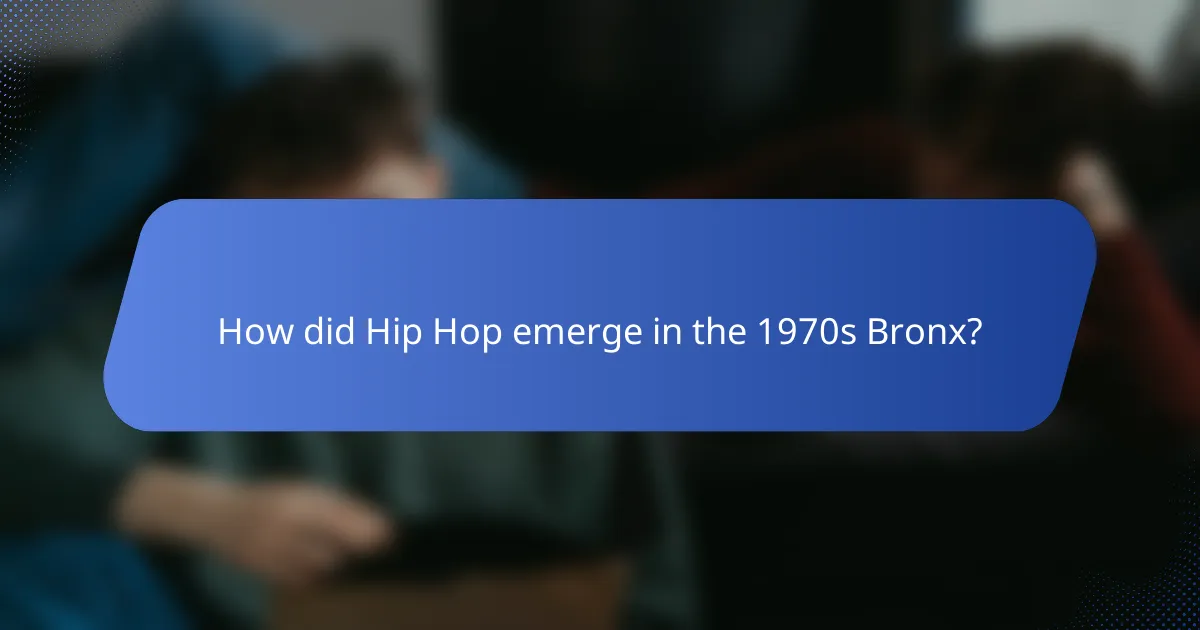
How did Hip Hop emerge in the 1970s Bronx?
Hip Hop emerged in the 1970s Bronx as a vibrant cultural movement that combined music, dance, and visual art forms. It was a response to social and economic challenges, creating a unique expression of identity and community among marginalized youth.
Origins in block parties
The roots of Hip Hop can be traced back to block parties in the Bronx, where local DJs would set up sound systems and play music for the community. These gatherings provided a space for people to dance, socialize, and showcase their talents, laying the groundwork for what would become a cultural phenomenon.
Block parties often featured a mix of funk, soul, and disco music, which DJs would blend to create a continuous dance experience. This practice not only entertained but also fostered a sense of unity and belonging among attendees.
Influence of DJ Kool Herc
DJ Kool Herc is often credited as one of the pioneers of Hip Hop, particularly for his innovative techniques in mixing and sampling. He introduced the concept of the “breakbeat,” where he would isolate the instrumental breaks of songs, allowing dancers to showcase their skills during these energetic segments.
His style of using two turntables to create seamless transitions between tracks revolutionized DJing and set the stage for future Hip Hop artists. Kool Herc’s influence extended beyond music, as he became a central figure in the Bronx’s emerging Hip Hop community.
Role of graffiti and breakdancing
Graffiti and breakdancing played crucial roles in the Hip Hop movement, serving as visual and physical expressions of creativity. Graffiti artists used public spaces to convey messages and showcase their art, often reflecting the struggles and aspirations of their communities.
Breakdancing, or B-boying, emerged as a dynamic dance form that complemented the music of Hip Hop. Dancers would perform acrobatic moves and intricate footwork, often competing in battles that highlighted their skills and style. Together, these elements contributed to the rich tapestry of Hip Hop culture in the Bronx during the 1970s.

What were the key elements of Hip Hop culture?
The key elements of Hip Hop culture include a blend of artistic expression, community engagement, and social commentary. Originating in the 1970s Bronx, these elements have shaped a cultural movement that emphasizes creativity and identity among marginalized communities.
Four pillars: MCing, DJing, graffiti, breakdancing
The four pillars of Hip Hop culture are MCing (rapping), DJing, graffiti art, and breakdancing. MCing involves vocal delivery and lyrical composition, often addressing social issues or personal experiences. DJing focuses on music selection and mixing, creating the beats that drive the culture.
Graffiti serves as a visual expression of identity and artistic talent, often transforming urban spaces into canvases. Breakdancing, or b-boying, is a dynamic dance form that showcases physical skill and creativity, often performed in battles or cyphers.
Community and identity formation
Hip Hop culture plays a crucial role in community and identity formation, particularly for youth in urban environments. It provides a platform for self-expression and connection, allowing individuals to share their stories and experiences through various art forms.
This cultural movement fosters a sense of belonging and solidarity, as participants engage in collective activities like cyphers, battles, and graffiti jams. These interactions help build social networks and empower individuals to embrace their cultural heritage while addressing societal challenges.
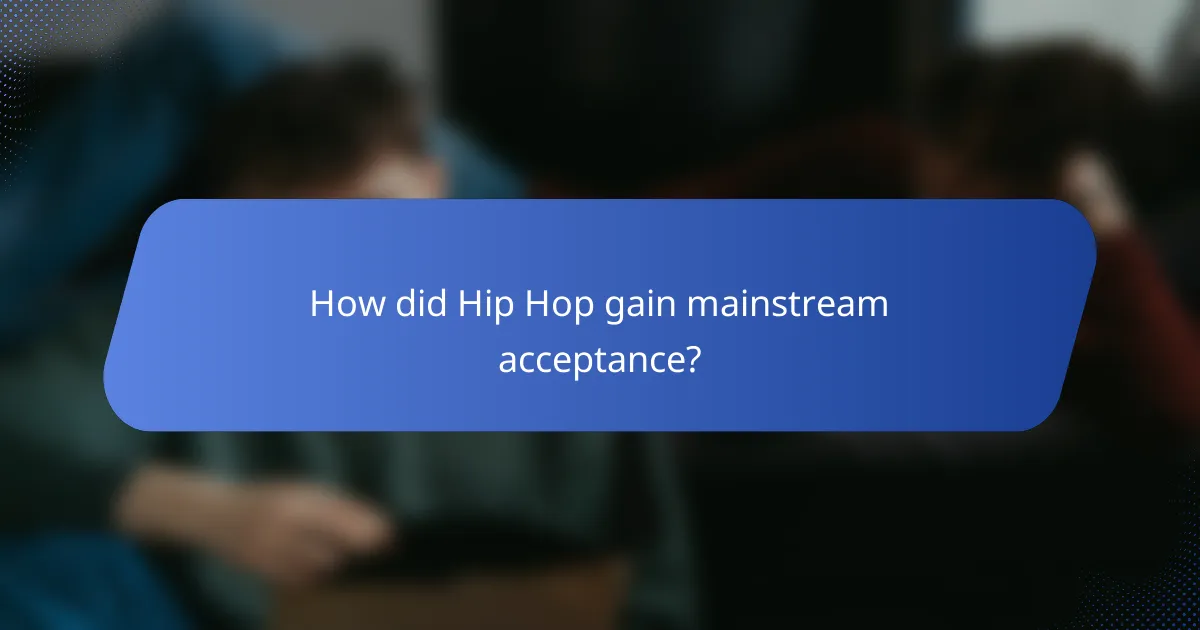
How did Hip Hop gain mainstream acceptance?
Hip Hop gained mainstream acceptance through a combination of influential artists, media exposure, and cultural shifts in the late 1970s and early 1980s. Key figures and platforms helped to elevate the genre from underground roots to a global phenomenon.
Rise of artists like Grandmaster Flash
Grandmaster Flash was pivotal in the rise of Hip Hop, known for his innovative DJ techniques and engaging performances. His group, Grandmaster Flash and the Furious Five, produced tracks that resonated with urban youth, addressing social issues and everyday life.
Artists like Flash set the stage for future Hip Hop stars by showcasing the genre’s potential for storytelling and artistic expression. Their success helped to attract attention from record labels, leading to more widespread distribution of Hip Hop music.
Impact of MTV and radio play
The launch of MTV in the early 1980s provided a crucial platform for Hip Hop artists to reach broader audiences. Music videos featuring Hip Hop tracks introduced the genre to viewers who may not have been exposed to it otherwise, significantly boosting its popularity.
Additionally, radio stations began to include Hip Hop in their playlists, further legitimizing the genre. This increased airplay allowed Hip Hop to penetrate mainstream culture, leading to collaborations with pop artists and crossover hits that solidified its place in the music industry.

What challenges did Hip Hop face in the 1980s?
In the 1980s, Hip Hop encountered significant challenges, including commercialization concerns and censorship issues. These obstacles shaped the genre’s evolution and its relationship with mainstream culture.
Commercialization concerns
The commercialization of Hip Hop raised concerns among artists and fans about the authenticity of the genre. As record labels began to prioritize profit over artistic expression, many felt that the core messages of Hip Hop were being diluted to appeal to a broader audience.
Some artists resisted this trend by maintaining their grassroots connections and focusing on socially conscious themes. However, the allure of commercial success led many to compromise their original messages, creating a divide within the community.
Censorship and controversy
Censorship in the 1980s posed a significant challenge for Hip Hop artists, particularly regarding explicit lyrics and themes. Many songs faced bans from radio stations and were subject to scrutiny from various advocacy groups, which argued that they promoted violence or misogyny.
This controversy sparked debates about freedom of expression and the responsibility of artists. While some artists chose to tone down their lyrics to gain wider acceptance, others embraced the controversy, using it as a platform to amplify their messages and challenge societal norms.
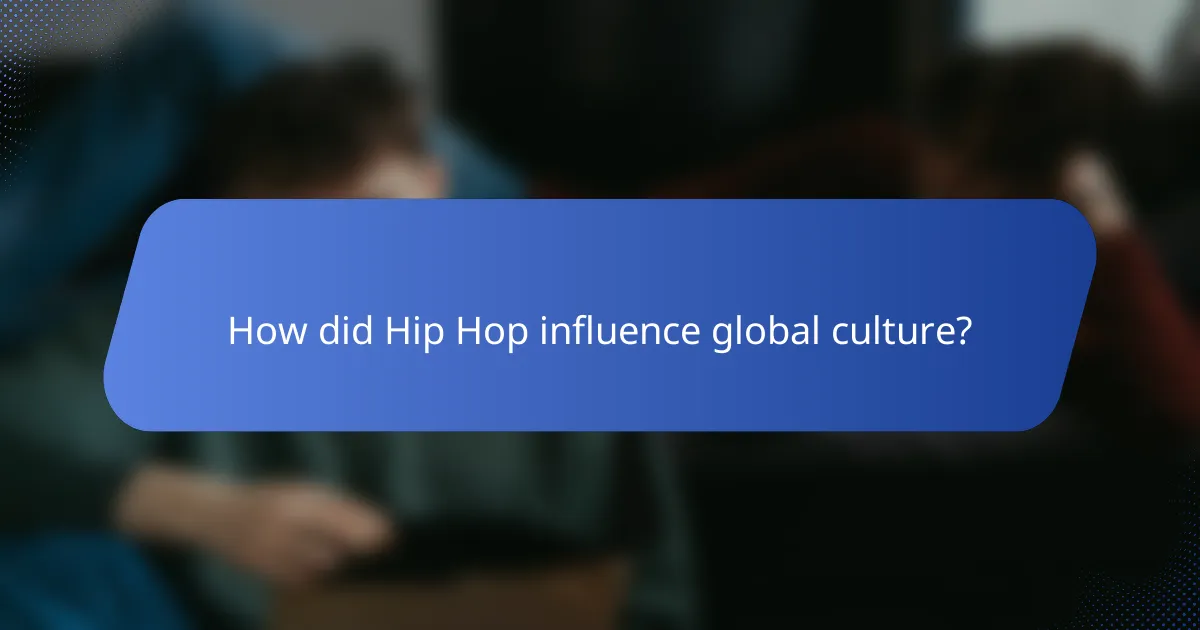
How did Hip Hop influence global culture?
Hip Hop has profoundly influenced global culture by shaping music, art, and social movements across various regions. Its roots in the Bronx during the 1970s sparked a cultural revolution that resonated worldwide, leading to widespread acceptance and adaptation of its elements in diverse societies.
Spread to Europe and Australia
Hip Hop began to spread to Europe and Australia in the early 1980s, with artists and DJs adopting its beats and styles. Major cities like London, Paris, and Sydney became hubs for local Hip Hop scenes, where artists blended traditional elements with their cultural influences.
Festivals and events celebrating Hip Hop culture emerged, fostering community engagement and collaboration among artists. This cross-pollination resulted in unique subgenres, such as UK Grime and Australian Hip Hop, which reflect local experiences while maintaining the core essence of Hip Hop.
Integration into fashion and language
Hip Hop’s influence on fashion is evident in the widespread adoption of streetwear styles, including oversized clothing, sneakers, and accessories. Brands like Adidas and Nike have collaborated with Hip Hop artists, further solidifying this cultural connection and driving trends in urban fashion.
Language has also been transformed by Hip Hop, with slang and expressions originating from the genre permeating everyday speech. Terms like “lit” and “dope” have entered mainstream vernacular, showcasing how Hip Hop has shaped communication styles across different cultures.
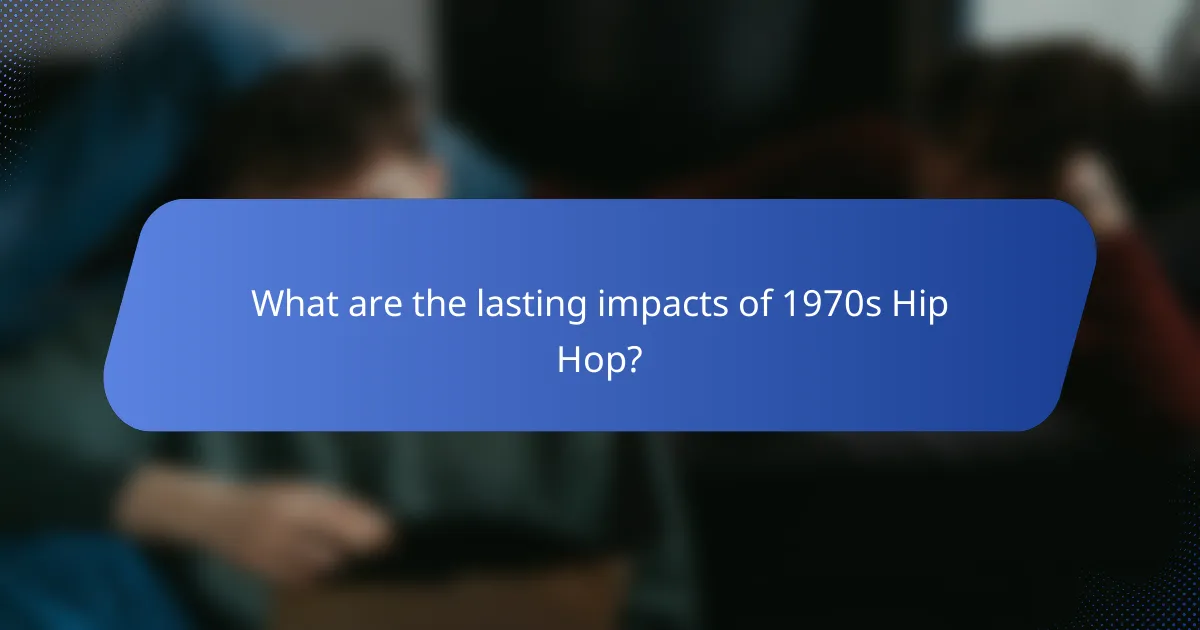
What are the lasting impacts of 1970s Hip Hop?
The 1970s Hip Hop movement laid the groundwork for contemporary music genres and sparked significant social and political change. Its influence continues to resonate in various aspects of culture, shaping music, fashion, and activism today.
Foundation for modern genres
The emergence of Hip Hop in the 1970s served as a catalyst for the development of numerous modern music genres, including rap, R&B, and electronic dance music. Elements such as sampling, beatboxing, and DJing became foundational techniques that artists still utilize.
Today, many popular artists across genres incorporate Hip Hop elements into their music, reflecting its pervasive influence. For instance, genres like pop and rock frequently blend with Hip Hop, creating hybrid styles that dominate the charts.
Social and political movements
Hip Hop in the 1970s was not just a musical revolution; it was also a powerful voice for marginalized communities. Artists used their platforms to address social injustices, economic disparities, and systemic racism, making Hip Hop a vehicle for activism.
Events like block parties and community gatherings fostered a sense of unity and empowerment, encouraging youth to engage in social issues. This legacy continues today, as many contemporary Hip Hop artists advocate for change and raise awareness about pressing societal concerns.

What are the emerging trends in Hip Hop today?
Emerging trends in Hip Hop today include a blend of genres, increased digital presence, and a focus on social issues. Artists are experimenting with sounds from various musical styles, while platforms like TikTok and YouTube play a significant role in promoting new talent and trends.
Genre Blending
Hip Hop is increasingly incorporating elements from other genres such as pop, rock, and electronic music. This fusion creates a diverse sound palette that appeals to a broader audience. For instance, collaborations between Hip Hop artists and pop singers have become common, resulting in chart-topping hits.
Artists like Lil Nas X and Post Malone exemplify this trend, as they seamlessly blend Hip Hop with country and rock influences. This genre-blending not only attracts fans from different musical backgrounds but also pushes the boundaries of traditional Hip Hop.
Digital and Social Media Influence
The rise of social media platforms has transformed how Hip Hop artists promote their music and connect with fans. TikTok, in particular, has become a powerful tool for viral marketing, allowing songs to gain popularity through short, engaging videos. Artists often create challenges or trends that encourage user participation, further amplifying their reach.
Additionally, streaming services like Spotify and Apple Music have changed how listeners consume music, with playlists and algorithm-driven recommendations shaping popular trends. This digital landscape allows for rapid dissemination of new sounds and styles, making it essential for artists to stay current.
Focus on Social Issues
Many contemporary Hip Hop artists are using their platforms to address social and political issues, reflecting the genre’s roots in activism. Themes such as racial inequality, police brutality, and mental health are increasingly prevalent in lyrics and public statements. This trend resonates with listeners who seek authenticity and social consciousness in music.
Artists like Kendrick Lamar and J. Cole are known for their thought-provoking lyrics that challenge societal norms and inspire change. By addressing these topics, they not only elevate the conversation within the genre but also engage a wider audience who values meaningful content.



